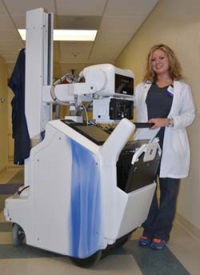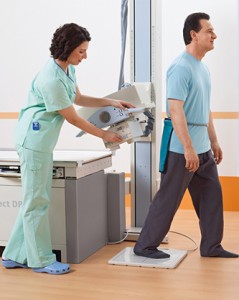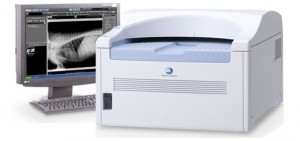Category: “Diagnostic Imaging”
- Radiologic Technologist Requirements Vary by State
- The Radiologist’s demise?
- Diagnostic Imaging Utilization Trends and Reimbursement
At the peak in 2006, according to a 2008 Government Accounting Office report, Medicare spent $14.1 billion on diagnostic imaging. Since then, annual spending has steadily dropped, falling by 21 percent by 2010, based on a Neiman Policy Institute report. To date, this trend has not reversed, Levin said. - See more at: http://www.diagnosticimaging.com/reimbursement/imaging-utilization-trends-and-reimbursement?GUID=52331DD9-6AF6-4DA6-9850-104DD469DEE5&rememberme=1&ts=25072014#sthash.MPKxXUgQ.dpuf
- The Radiologist’s Value: Measuring the Immeasurable?
Radiologists need to be proactive in demonstrating their value in improving clinical outcomes now that CMS is adjusting payments based on quality and not volume. “In 2013, CMS started implementing the value modifier by looking at quality and cost measures and getting composite scores in each of those areas, said Judy Burleson, senior advisor on quality metrics at the American College of Radiology (ACR). Quality is on one axis, cost on the other, with low, average and high rankings for each. The score determines the potential for positive, negative or zero impact on reimbursement for Part B services. “If you’re low cost and high quality, you’d be in the upper spectrum,” she said. The physician’s performance report is compared to other physicians reporting the same measures. “
- Technique charts comparing DR and CR – a resource every Radiology department needs
- Digital X-Ray Market Worth $8,710 Million by 2018
In terms of value, the global digital X-ray market size was estimated at $4,687.2 million in 2013 and is expected to grow at a CAGR of 13.2% in the next five years.
The report, “Digital X-ray Market by Application (Mammography, Dental, Chest Imaging), Technology (Computes, Direct), Portability (Floor to ceiling mounted, Ceiling mounted, Handheld), End User, Price segments, Flat panel detectors, Software – Global Forecast to 2018,” provides a detailed overview of the major drivers, restraints, challenges, opportunities, current market trends, and strategies impacting the digital x-ray market along with the estimates and forecasts of the revenue and share analysis.
- HIMSS 2013 Annual Report of the U.S. Hospital IT Market – including modality penetration
If you sell in the IT space or Diagnostic Imaging Equipment this report will tell you what is being purchased, trends, and what level of penetration has occurred. For example, over 98% of academic centers have already purchased CR and DR. They are not your low hanging fruit. To find out what is read this very detailed HIMSS report.
- The Operating Room heats up as a buyer for advanced imaging technology
- When partnerships between Imaging Centers and Hospitals gets bloody – $52 million dollar lawsuit
- Interesting read on the state of Radiology selling
Neither vendors nor end users have fared well with the changes that have gone on with healthcare reform in the past few years. While meaningful use, ICD-10, health information exchanges (HIEs), regional health information organizations (RHIOs), accountable care organizations (ACOs), and other related acronyms are affecting the way healthcare operates, someone apparently forgot to tell the leadership at most PACS providers. They seem to ignore the realities of the healthcare marketplace and continue to hold fast to year-over-year quota increases that are virtually unattainable by sales.
- What You Need to Know About PACS and VNA
- Interesting nuances on how Radiologists read – and how to compare quality
- GMI Ultrasound to Distribute Siemens Products in US
- What does a 2% reimbursement cut mean to radiology?
- DR on Xray Portables simply makes business sense
There exists clear clinical evidence that the latest digital radiography (DR) detector portable X-ray units allow for portable exams to be performed in almost half the time previously required for computed radiography (CR) and film-based exams.
- Global ultrasound market expected to flourish
The global ultrasound device market is expected to reach $8.7 billion by 2019, growing at a compound annual growth rate (CAGR) of 6.4 percent, according to a new Transparency Market Research report.
- Clinical decision-support (CDS) software becomes mandatory before ordering Imaging Studies
Starting January 1, 2017, physicians ordering advanced diagnostic imaging exams (CT, MRI, nuclear medicine and PET) must consult government- approved, evidence-based appropriate-use criteria, namely through a CDS system
- In Dense Breasts, Screening Ultrasounds Find More Cancers
- Tethered DR – a cost effective alternative to wireless. Siemen’s stakes its flag!
- Carestream’s White Paper “Digital Imaging Technologies Reduce Costs”
The time to do an X-ray with digital technology is now less than two minutes per exam, compared with the 15 minutes of older, analog systems. Because of the rapid throughput intrinsic to digital imaging, a facility can replace a number of analog x-ray systems with just one or two DR and CR rooms. The long-term benefits of investing initially in a DR system are immense, and its cost of investment can be recovered within a few years.
- The reports of CR’s demise have been greatly exaggerated
Ron Batory, Konica Minolta’s product marketing manager for CR and conventional imaging products, says CR still is recognized as the system of choice for late digital imaging adopters, thanks to rapid technological developments and decreasing CR prices over the past few years.
- Portable DR a must to reduce turn around times
- Digital mammography costlier, shows no detection-rate advantages: study
- Digital Exposure & Radiation Safety Including Technique Development
- In a value based reimbursement world what are Radiologist’s concerned about?
- Diagnostic Imaging escapes the knife – CMS slashes at reimbursment for Radiology Oncology instead
- All Technology Sellers may be impaced by one this one study: Older women don’t benefit from new breast technology
This may be harbinger of a greater challenge for capital equipment sales and medical device manufacturers. Thought Leaders and the CMS are starting to demand equipment be based on CED structures (evidence development). In other words new technology must prove clinical efficacy before being sold or adopted.
“In a conversation with AuntMinnie.com, lead author Gross said the results of the study reflect a broader problem with U.S. healthcare: the adoption of new technologies that haven't been proved to improve patient outcomes. "There is a widespread belief in the American healthcare system that newer is better," Gross said, even as "there is virtually no evidence that these newer technologies are better or more effective in terms of saving lives and improving patient outcome..."
- 18 States have now passed breast density legislation
- Ultrasound for Diagnostic Imaging – A primer
- Carestream adds pro-active monitoring to their PACS to prevent problems






